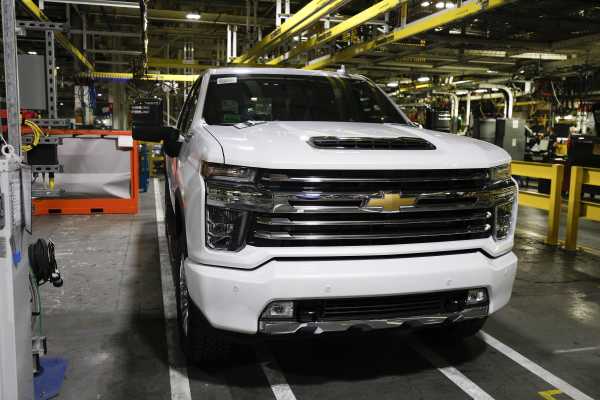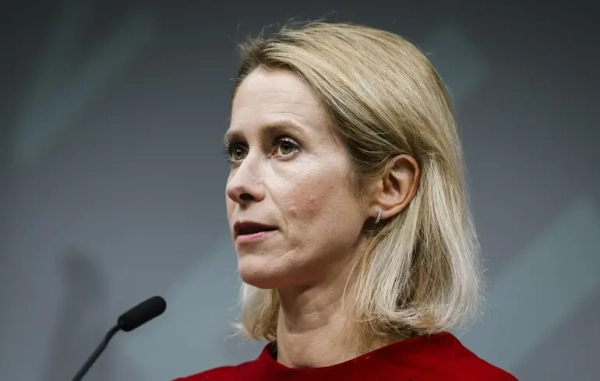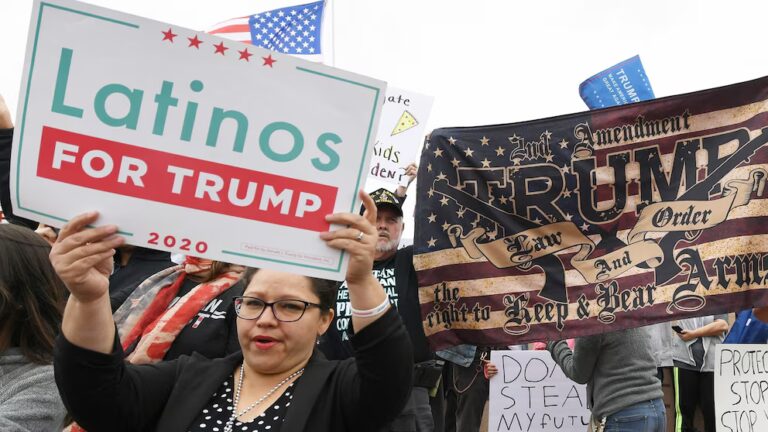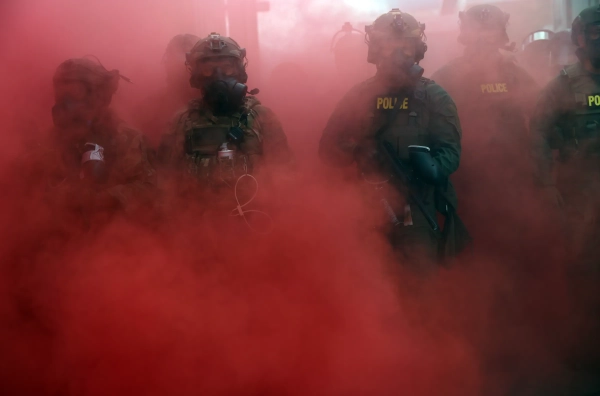
Car companies have now staked out opposing sides in the ongoing fight between the State of California and the Trump administration over emissions rules for vehicles that could determine the future of the US auto industry.
The Trump administration wants to relax fuel economy rules for cars and light trucks, arguing that lower efficiency standards makes cars cheaper and makes drivers safer. But California wants to maintain its strict standards on vehicle emissions, putting the state and the federal government on a collision course, with carmakers caught in the middle.
Last week, the Association of Global Automakers, a trade group that includes Toyota, Fiat Chrysler, and General Motors, announced that it would side with the White House in its effort to revoke California’s authority to set its own emissions standards for cars and light duty trucks.
Then on Thursday, the Wall Street Journal reported that the Trump administration is backing off its plans to freeze fuel economy standards at 2020 levels and would instead consider a rule that mandates a small annual increase in fuel economy from carmakers. It’s a softening of their stance, but still a significant weakening of the current rules.
These moves came after a sudden announcement this summer that another group of automakers — Ford, Volkswagen, Honda, and BMW — reached a voluntary deal with California to set tougher emissions and fuel economy rules for themselves than what the White House was trying to implement.
President Trump was “enraged by California’s deal,” according to the New York Times, and Trump’s Justice Department responded to the deal by launching an antitrust investigation.
This fight over emissions is one of dozens of legal battles between California and the White House, not to mention an increasingly personal spat between Trump and California Gov. Gavin Newsom. For the US auto industry, it’s another major headache alongside an ongoing trade war, slowing sales, and a rapidly changing market that is making it difficult to plan for the future.
Nonetheless, the political, economic, and environmental stakes in this emissions dispute are high: California is the largest market for light-duty vehicles. These cars and trucks comprise 20 percent of all US greenhouse gas emissions. Another 14 states and the District of Columbia follow California’s standards for vehicles, so the benchmarks set in the Golden State ripple through the rest of the country and can even shape the global market.
California has long set the standard for air pollution rules. The Trump administration wants that to change.
To understand the significance of the changes the Trump administration is trying to make, it helps to understand a bit of history: California has received waivers under the Clean Air Act since 1968 to set stricter air quality rules than the federal government. Because Californians buy so many cars, automakers either had to build cars to different standards for different states, or effectively let California govern pollution rules for the rest of the country.
In 2012, the Department of Transportation and the Environmental Protection Agency under the Obama administration put together a set of emissions and fuel economy rules that would bring the whole country under a similar standard.
The Obama revisions to the Corporate Average Fuel Economy program offered different ways to meet its goals, but if a car company wanted to meet them by solely improving fuel economy, they would have to reach an average fuel economy of 54.5 miles per gallon across all the cars and light-duty trucks they sell.
Car companies know how to make fuel-efficient and zero-emissions cars, but the problem is that customers aren’t buying enough of them. In fact, Americans have shown a growing preference for larger, thirstier vehicles like SUVs, reducing the average fuel economy of the cars sold for some automakers. That has led some companies to miss their targets.
For example, Fiat Chrysler has already paid a $77.3 million civil penalty for failing to meet fuel economy goals for model year 2016 and now faces a $79.4 million fine for not meeting efficiency benchmarks for model year 2017.
Shortly before Obama left office, government officials conducted a progress assessment of the auto industry in meeting these tougher fuel economy goals. The report, known as a midterm evaluation, concluded that the targets were still feasible, despite grumblings from some carmakers.
When Trump took office, the auto industry and oil companies saw an opportunity. They asked officials to reconsider the midterm evaluation, arguing that it was rushed, and to revise the fuel economy standards.
But US car companies got way more than they bargained for. Rather than a revision to the goals and adding flexibility for meeting them, the Trump administration proposed a freeze on fuel economy standards after 2020 under what it dubbed the SAFE rule, holding the average fuel economy at 37 mpg.
The key point here is that while California can set air pollution rules, fuel economy rules are under the sole purview of the federal government. And while the amount of pollutants emitted by car, particularly carbon dioxide, are related to fuel efficiency, there’s not an exact link between grams of CO2 emitted per mile and how many miles per gallon of gasoline a car travels. “There is a relationship, but it is not straight forward,” said Dave Clegern, a spokesperson for the California Air Resources Board, in an email.
However, it’s difficult for carmakers to meet the Trump administration’s weaker proposed fuel economy standards and California’s stringent air pollution rules at the same time. So in September, the Trump administration proposed revoking California’s Clean Air Act waiver, starting a huge legal battle. And once the weaker fuel economy rules are finalized, California could file another lawsuit.
Car companies want certainty, but the Trump administration is giving them anything but
For car companies, this situation has undermined their long-desired goal of one national standard for cars. “[T]he Obama standards actually constitute the only single national program the U.S. and California have ever had on these issues,” said Clegern. “The Trump Administration’s action is what splits the program apart.”
And the litigation between California and the White House could drag on for years if Trump is reelected, making it difficult for car companies to plan ahead. The cars of the next decade are already on the drawing boards, but without knowing the standards they have to meet, companies can’t figure out how to optimize designs, what materials to use, and where to conduct more research.
In short, the auto industry is already planning far ahead for a post-Trump auto market, but one in which the next administration could snap back tougher fuel economy rules and one where the weaker standards are upheld. In an era of tight margins and slow auto sales, that’s a tough needle for carmakers to thread.
That’s why BMW, Honda, Ford, and Volkswagen took the initiative over the summer to reach a voluntary deal with California to set tougher goals for themselves. The companies agreed to increase vehicle fuel economy of their fleets 3.7 percent year over year between model year 2022 and model year 2026.
If met solely with fuel economy improvements, these targets would lead to a 51 mpg average by 2026 across a car company’s sales. It’s a weaker standard than that proposed by Obama but more stringent than the one proposed by Trump. But the deal also means California won’t suddenly tighten its rules for these companies, even if another administration takes over the White House, giving the manufacturers some stability.
“We’re focused on achieving regulatory certainty for our business rather than engaging in litigation,” Rachel McCleery, a spokesperson for Ford, told Vox in an email in July. “An automaker that complies with this voluntary agreement should automatically comply with [the EPA SAFE rule], which is expected to have GHG [greenhouse gas] standards that are significantly less stringent.”
At the time, other car companies said they would wait for the dust to settle or hoped to avoid weighing in on the fight. But then the Association of Global Automakers (AGA) said last week that it would back the Trump administration in its litigation with California in Environmental Defense Fund v. Chao. The lawsuit challenges the revocation of California’s special status under the Clean Air Act.
“We did not ask for, nor did we want, these questions to be decided in the courts, but we hope this pathway leads to a solution amenable to all parties,” said John Bozzella, president and CEO of AGA, in a statement. “With our industry facing the possibility of multiple, overlapping and inconsistent standards that drive up costs and penalize consumers, we had an obligation to intervene.”
According to the New York Times, the announcement came after several attempts by the White House to push the AGA off the sidelines and make it pick a side in the dispute. The AGA did not respond to a request for comment. Meanwhile, Honda, a member of AGA but also a signatory to the voluntary deal with California, has distanced itself from the AGA’s action.
“Honda is not a participant in this litigation, and is not contributing any funds supporting our trade association’s activity in this area,” the company told the Washington Post. “We have been very clear on wanting to avoid lengthy and costly litigation on this issue, which will result in a great deal of regulatory uncertainty.”
One of dividing lines between automakers is that some companies have done a far better job of improving their fuel economy than others, as you can see in this chart:

The AGA companies that sided with Trump have seen some of the smallest gains in fuel economy. Toyota actually experienced a reduction in its average fuel economy among its offerings between 2012 and 2017.
Now the White House is reportedly giving up on the idea of freezing fuel economy standards. According to the Wall Street Journal, the new proposal in the works would have auto companies increase their fuel economy by 1.5 percent annually. Asked for comment, the EPA said the proposal is still in development.
“The Trump Administration is focusing on finalizing the SAFE rule which will deliver one national standard to the American auto market,” said Michael Abboud, an EPA spokesperson, in an email.
But California is still likely to challenge this walkback. “The rumored 1.5% year-over-year reduction in greenhouse gas emissions is still not nearly enough for California to meet its air quality and climate goal,” Clegern said. “The rumored federal proposal would compromise our ability to meet federal air quality standards and would directly impact public health.”
Electrification could one day render this fight moot
While car companies have staked out different sides of this regulatory battle, most are increasingly betting on electric cars.
General Motors has said for years that it is betting on an all-electric future. So is Daimler. Ford on the other hand has said that it is giving up making sedans and coupes save for the Mustang, focusing instead on trucks, SUVs, and crossovers. But that means those larger vehicles will have to get more fuel-efficient. Earlier this year, Ford announced that it was going to electrify its most popular model, the F-150 pickup truck. Volkswagen and Honda are also developing mass-market electric cars.
But last year, Trump threatened to end tax credits for electric cars, a major incentive for consumers to purchase these vehicles, to retaliate against GM after it announced job cuts. California, which accounted for 46 percent of new electric vehicle registrations last year, is the largest beneficiary of this tax credit.
At the same time, cities and even entire countries are weighing bans on all internal combustion engines.
With concerns about climate change mounting and transportation becoming a larger emitter of greenhouse gases, cars and trucks will continue to be scrutinized for their emissions, and pressure will continue to mount to reduce them.
Sourse: vox.com






